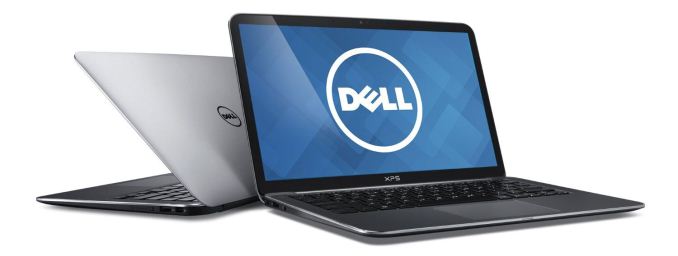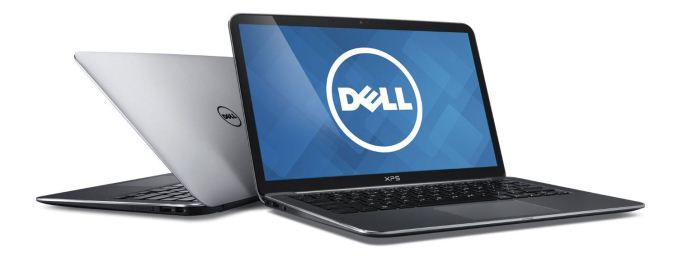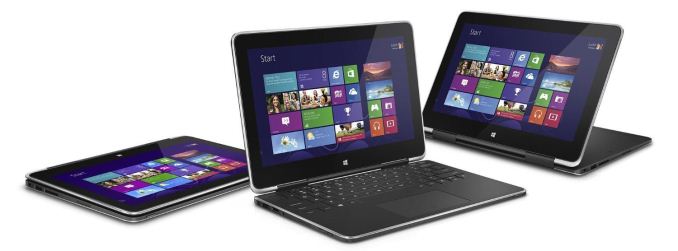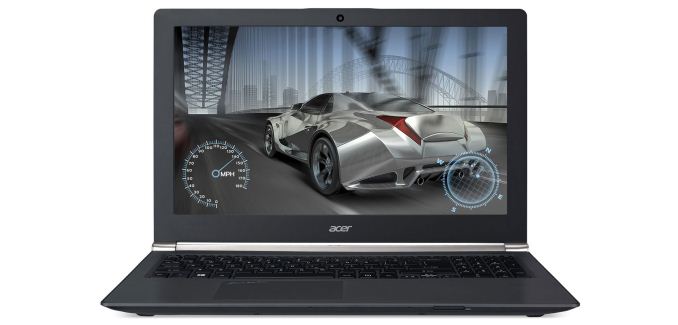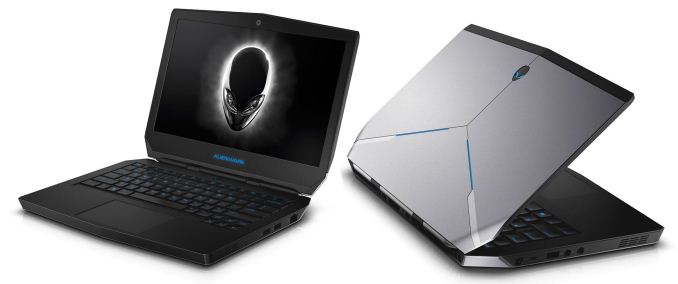Best $1000 Laptops: Holiday 2014
Mainstream Laptop Recommendations
So far we've covered the budget laptop sector as well as Chromebooks in our Holiday 2014 Guides, but if you want a good quality laptop that can handle just about any task you might throw at it, you need to plan on spending more money. With a price target of $1000 (and I'm going to be more flexible this time, so really we're talking about $750~$1250), there are tons of options, and while there's still a need to compromise it's no longer the sort of compromise that might make a laptop undesirable in most areas.
Let me start by reiterating that there are plenty of users and applications that simply don't need tons of compute power. A moderate laptop with sufficient memory and a solid state drive will often equal or beat a laptop with a fast processor saddled with a hard drive for storage. If you're mostly surfing the web, writing emails, and doing typical office tasks, the system requirements for such uses have been pretty flat for a while now. However, there are still plenty of reasons to consider spending more money instead of getting a budget laptop.
Case in point: finding anything with a good quality display can be very difficult if you limit yourself to $500 or less. The OEMs have decided market segmentation is the way things should be, which means in general they refuse to put quality displays in budget offerings. There are a few exceptions now and then, e.g. the Toshiba Chromebook 2 has an option for a 1080p IPS display, but Chrome OS may not be sufficient for all use cases.
Along with the display, build quality including the touchpad and keyboard, and the storage subsystem all contribute to the overall feel of a laptop in ways that don't often show up on a spec sheet. It's really easy for an OEM (or Walmart, Best Buy, Office Depot, etc.) to push a laptop with more MHz/GHz, more memory, or more storage – 8GB is twice as much as 4GB, 1TB is twice as much as 500GB, and so on. But there's a point where you simply have enough RAM, performance, and storage and what will really make a laptop more pleasurable to use over a long period of time will be the less glamorous aspects like the keyboard, touchpad, speakers, and display.
With that said, once we hit $750 and above, I'm at the point where I basically refuse to consider laptops without SSDs and with low resolution 1366×768 TN displays. I might make an exception for specific use cases, but if you can get a better display and an SSD for your boot drive, that would be a highly recommended upgrade.
All-Around Laptops/Ultrabooks
Starting at the top, for general use and a "go anywhere, do everything" laptop, my recommendations are to get something with at least 8GB RAM and at least a 240GB SSD. I'd also lean towards at least a 13.3" display size, but if you prefer smaller devices that's fine; on a similar note, I'm ambivalent towards touchscreens as I've never found them to be a "must have" feature. I want a backlit keyboard, ideally a good (Synaptics preferably) touchpad, and an IPS (or similar technology, e.g. AHVA) display; HiDPI displays are available but still have occasional quirks, so they're fine but by no means required. Wrapping up my wish list, for general use I want something relatively lightweight and portable, and battery life of at least six hours is definitely desirable.
I didn't see any AMD-based laptops that I really found compelling in this price range; most manufacturers view AMD as a budget option, so things like SSDs and decent displays are rarely paired with AMD APUs. HP does have their EliteBook 725/745/755 G2 offerings, but pricing and features will limit those mostly to businesses with a specific need for AMD's APUs. When you add all of these factors up, the vast majority of laptops get eliminated and what we're left with is a list of various Ultrabooks (though I admit I may have missed some other viable options), so we'll start with a discussion of Ultrabooks.
ASUS UX303LN ($1297)
Taking all of the above factors into consideration, the available options can be rather limiting, and what we end up with is a lot of Ultrabooks. My top pick for this bracket is the ASUS UX303LN, which has a nice build quality, good keyboard, decent speakers, and as an added bonus you get a touchscreen QHD+ display. However, many users have noticed problems with the colors on the display (the colors are extremely oversaturated), which seems to be an issue with many of the 13.3" and 14" QHD+ laptop panels. You should be able to at least partially correct the colors with the ASUS Splendid application, and calibration tools can do wonders if you have access to them, but I'd rather have a 1080p display with more accurate colors than a QHD+ panel that has issues with certain hues. Pricing is also a bit higher than I'd like for a mainstream offering (though I've seen it on sale for $1250 or less within the past few days).
Outside of the display, about the only other potential concern is going to be temperatures under heavier loads. That's because the UX303LN actually packs a fairly potent combination of hardware, combining a Core i7-4510U processor with NVIDIA's GeForce 840M graphics. You also get 12GB RAM and a 256GB SSD, 802.11ac wireless, and the laptop is rated at eight hours of battery life. This is at the top of our price range for a mainstream notebook, and it's not without a few slight blemishes, but it's going to be hard to beat ASUS without making some other compromises.
Ultrabook Alternatives
If you're looking for alternatives, Ultrabooks are still some of the better options, as there are many with decent LCDs and they generally come with SSDs once the price gets close to $1000. The HP Envy TouchSmart 14 has a lot going for it on paper, but there are again reports of poor colors on the QHD+ display and the default configuration omits any form of SSD. (You could upgrade it on your own of course.) It's a 14" laptop with a Core i5-4200U and 8GB RAM, but no dedicated graphics and battery life is rated at six hours (which generally means less than six if you're doing much more than light office work). The Dell XPS 13 is another decent alternative, with a 1080p touchscreen and nice overall build quality, but again without any real graphics horsepower to back it up. $1200 (on sale at Amazon.com right now from $1500) gets you the 256GB SSD and 8GB RAM model with a Core i7-4510U, so pretty much similar to the ASUS but with a different LCD and no dedicated graphics for about $50 less.
And since these are mostly Ultrabooks, we might as well cover some of the remaining options. The Acer S7-392 is now available for $1000 (on sale) with a 1080p IPS panel, or $1250 with a 2560×1440 panel. Both models come with 8GB RAM and a 256GB SSD, along with a touchscreen display, but I wasn't a fan of the shallow keyboard or lack of dedicated function keys. The Samsung ATIV Book 9 Plus is a nice looking laptop with a QHD+ display, but the 4GB RAM and 128GB SSD are pretty skimpy, even at $1039 (and models with more RAM/storage cost significantly more). And finally, Toshiba's KIRAbook is still worth a look, with a QHD display, 8GB RAM, and 256GB SSD for $1250 (on sale from $1500).
We should also mention a few of the hybrid devices out there. Lenovo's Yoga 2 Pro with a QHD+ panel gives you a 360 degree hinge that allows you to work as a laptop, tablet, or anything in between. It comes with an i7-4500U, 8GB RAM, and 256GB SSD for $1187 (currently on sale from $1700). Don't be fooled by the "previous generation" hardware, either – while there's a new Yoga 3 Pro with a Broadwell-Y processor (Core M 5Y70), it is quite a bit slower than the Haswell-U part in the Yoga 2 Pro. If you're looking for a more budget friendly device, the Lenovo Flex 2 14" can be had for around $800, but only with a 128GB SSD. The ASUS T300LA is another a hybrid device that might be interesting for some users; it's a detachable 13.3" tablet/laptop, and $1000 gets you an i5-4200U with 4GB RAM and a 128GB SSD (the Core i7/8GB/256GB SSD model is unfortunately $1400).
Ultraportable Aspirations (Sub-13")
Lenovo Yoga 11s ($750 on sale)
Not everyone likes to carry around a 13.3" or larger laptop, and you can find some decently equipped 11.6" and 12.5" models for under $1000. Going smaller does tend to limit performance a bit, however, as cooling becomes more of a concern. Of the sub-compact options, many of the best devices are hybrid offerings as well, giving you both laptop and tablet-like functionality. The best of these in my opinion is the Lenovo Yoga 11s, which is currently on sale for a rather impressive $750 (normally $1100). The CPU is a Y-series i5-4210Y, so it's not going to be as fast as the U-series parts or standard voltage offerings, but for office and internet use it's still sufficient. The 8GB RAM is better than most other sub-compacts, and while the 128GB SSD it's still livable – provided you keep your movies and images stored elsewhere. The display is a low resolution 1366×768 panel, but at least it's an IPS display and at 11.6" I don't feel the resolution is too bad either; going higher resolution would almost require using scaling for anyone with less than perfect eyesight. Finally, usable battery life is decent at 6.5 hours (give or take), and the weight of just three pounds definitely makes this a potent portable.
For alternatives that don't skimp too much, Dell seems to be the best option. Both the Dell XPS 12 ($830 on sale from $1100) and Dell XPS 11 ($850) are viable options, with the latter boasting a rather impressive QHD (2560×1440) IPS display. The XPS 11 is basically Dell's version of the Lenovo Yoga, with a 360 degree hinge providing 2-in-1 functionality. As far as other components go, the XPS 11 uses the same i5-4210Y CPU as the Yoga 11s, but it comes with just 4GB RAM; storage is a 128GB SSD as well. On paper the XPS 11 seems like a great device, but it has one major flaw: the keyboard is terrible. Hence, the 11s gets the primary recommendation and you'd really have to love some other feature of the XPS 11 to go that route.
The XPS 12 meanwhile is a bit heavier and bulkier, but it's far more at home in laptop mode than the XPS 11. With a Core i5-4200U it also offers a decent bump in performance relative to the Yoga 11s and XPS 11, and battery life is very good at roughly eight hours. It comes with a 12.5" 1080p IPS display as well, which looks quite nice. The 4GB RAM and 128GB SSD are still a bit limiting, and while the upgraded 8GB/256GB SSD model fixes those shortcomings it also bumps the price up quite a bit (currently $1250 on sale from $1600). If you don't like the Yoga 11s but still want something relatively small, I'd go for the XPS 12 over the XPS 11 personally, but then at 12.5" the XPS 12 isn't really much smaller than many of the 13.3" options.
I can also toss out a mention for the Surface Pro 3 (which we already mentioned in our Tablets Guide, which is why I initially didn't include it here). There are a lot of passionate Surface Pro 3 users, and it's a good device in a lot of ways, but like most things it's not "perfect". While the base model starts at $799, you really need to go with at least the $999 model as that will get you 128GB storage and a Core i5 processor (though the CPU isn't strictly required). You can even make a case for the $1299 model (currently on sale), as it doubles storage to 256GB and comes with 8GB RAM. I still wish Microsoft would include the Type Cover as part of the package, and while the kickstand works I feel strongly that the Surface Pro 3 is still more at home as a tablet than as a laptop. Considering the alternatives, however, it's definitely worth considering in this price bracket as one of the better hybrid options.
Fastest Gaming Laptops
If you're looking for a decent laptop that can also handle gaming, let's cut straight to the chase: you're going to want as much GPU performance as possible. As we've basically capped the price at $1250 (give or take), that will limit the options quite a bit. Normally, the fastest possible GPU you'd find at this price would be the GeForce GTX 860M, but there's at least one option with the GTX 870M currently on sale. (Note that notebooks with faster GPUs like the 880M, 970M, and 980M are well above the $1250 range we're looking at, which is why they're not considered). For pure gaming performance, the GTX 870M ends up being about 25-30% faster than the GTX 860M, making it a fairly significant boost to performance.
MSI GT70 Dominator ($1199)
As the only notebook to currently ship with a GTX 870M for under $1250, the MSI GT70 Dominator gets our highest performance "mainstream" gaming notebook recommendation. There are certainly areas of compromise – the pure HDD storage, cooling system, styling, and TN panel are all less than I'd like – but if you want to game on a notebook it's best to start with the fastest GPU you can afford. The other items like storage can be upgraded later, but there's not a significant market for notebook GPU upgrades. For $1200, you get a rather potent Core i7-4800MQ processor, 8GB RAM, 1TB HDD, and a decent 1920×1080 anti-glare TN panel. It's not perfect, but it's the best we can do at this price.
If you're willing to spend $50 more there are two alternatives that also pack a GTX 870M. One is the MSI GT60 Dominator, which is the 15.6" version of the GT70 with mostly the same components (but with 12GB RAM). The other is the Clevo P157SM, another 15.6" notebook with a 1080p matte TN panel. The Clevo looks better in some areas and generally offers superior cooling in my experience, but the touchpad is pretty awful and the tramp stamp doesn't help matters. The CPU is also a slightly slower i7-4710MQ and it comes with a 750GB HDD. Basically, we're giving up SSD storage to keep the price under $1300 while getting the fastest GPU possible.
Inexpensive Gaming Alternatives
The GTX 870M will win the benchmark competition without a doubt, but laptops with GTX 860M can come out ahead in other areas. One of the major benefits is that pricing is often substantially lower, and there are also several laptops that have decent IPS displays in this category. Dropping from the GTX 870M also means we can still get some form of solid state storage while keeping the price in check. Let's look at some of the choices, and there are quite a few decent "mainstream gaming laptops" with GTX 860M so I'm likely to miss a few.
CyberPowerPC Fangbook EVO HX6 ($800)
If you want the absolute lowest price possible on a legitimate gaming notebook, the Fangbook EVO HX6 (a branded version of the MSI GT60) wins that distinction. Coming in at $800 in the least expensive configuration, you get a 1080p matte TN display, Core i5-4210M CPU, GTX 860M, 8GB RAM, and a 1TB HDD. The use of a dual-core CPU isn't really going to be a problem for gaming either, so other than the lack of SSD storage this is a pretty potent gaming notebook – but it you want a quad-core version, that's only $100 more with an i7-4710MQ. Battery life isn't the greatest, and it's a bit bulky compared to some notebooks, but again the price is hard to beat. You could upgrade the storage with a 256GB or even 512GB class SSD and still come in well under the $1250 mark.
Runner up for the least expensive GTX 860M notebook is the Lenovo Y50, which starts at $949 in the base configuration that includes an i7-4710HQ, 1080p matte display (TN), 8GB RAM, and a 500GB 5400RPM (yuck) hard drive. The storage does have the benefit of a hybrid caching solution with 8GB SSD storage, but my experience with such small caching SSDs is that they don't help all that much in normal use – though they do tend to boost benchmark results. The display unfortunately isn't that great, as it appears to be a low contrast 1080p panel; the good news is that it's possible to upgrade the display for under $100 if you're so inclined, but that would likely void the warranty and it does require some technical skill and some time and effort.
Good Displays and Gaming Capable
Continuing with the GTX 860M options, let's move on to some laptops with good displays. I've said it before, but the LCD is what you're going to see the most on your laptop, so getting something more than a TN panel is a great long-term investment. It's difficult to find good displays on budget laptops, but once we're in the $1000 range there are plenty of options. The great thing about a decent gaming laptop is that it can usually handle any other task with ease, as games tend to be some of the most punishing applications for a laptop these days – short of workstation class applications, these gaming alternatives should be equally adept at office and multimedia use. If you want something faster than an Ultrabook and are willing to deal with a heavier/larger device and most likely lower battery life, these are reasonable options.
Acer NX.MQLAA.001 ($1200)
If you're willing to pay a bit more and you want a laptop that comes with a decent display from the factory, there are really only a few options. The best in my book right now would be the new $1200 Aspire V Nitro VN7-591G-75NJ Black Edition (NX.MQLAA.001), which will get you a 1080p IPS display, i7-4710HQ, 12GB RAM, and 1TB 5400RPM HDD + 128GB SSD. You need to be very careful about which model you purchase, however, as that particular model (the NX.MQLAA.001) is the only 15.6" IPS display – the others use TN panels. The design is sleek and quite attractive, measuring less than an inch thick and with a soft-touch coating on the chassis. Acer isn't always the best choice for quality laptops, but this is one of their better offerings and the price of $1200 is quite competitive. Battery life is around five hours of light use (four hours of moderate use), which is generally satisfactory for this level of performance.
If you don't mind a larger chassis, the Acer Aspire V Nitro Black Edition VN7-791G-73AW (NX.MQRAA.007) is $60 more but includes a 256GB SSD and 16GB RAM with a 17.3" IPS display, which is about as good as you'll find for this category. Note that these Acer VN7 laptops do not have touchscreens, if that's important to you. One of the interesting things is that the entire 17.3" line of the V Nitro Black Edition appears to have IPS displays, so that's at least one other point in their favor.
One of the other gaming laptops in this price range with an IPS panel is the MSI GE60 Apache Pro, and while I liked the laptop in most respects when we reviewed it, battery life was a sore point. In retrospect, maybe I was a bit too hard on MSI for the mediocre battery life, as it's basically right in the same ballpark as the Acer for most workloads. $1195 will get you an i7-4700HQ, 8GB RAM, 1080p IPS (technically AHVA) 15.6" LCD, and a 1TB hard drive. It's thicker and heavier than the Acer V Nitro Black, but it does include an optical drive if you value such things. The real issue is that at this price, I think the Acer looks nicer and is built better, and more importantly it gives you an SSD for the OS and applications.
Alienware 13 ($1249 on sale)
One final option is the new Alienware 13. Alienware has a storied history of providing gaming notebooks and desktops, but the new AW13 is about as thin and light as we've ever seen from the company. The model to get is the $1500 version that's currently on sale for $1200, as that will give you a 1080p IPS display; $50 extra will let you ditch the 1TB HDD and go with a 256GB M.2 SSD instead – highly recommended, and you can always add your own HDD later if needed (or buy a 512GB class SSD for less than $200 for a good balance of performance plus capacity). Battery life is quite good at around six hours for typical use. There's an optional QHD IPS display as well if you're interested, but that's a $150 upgrade from the 1080p IPS option (or $300 more than the 1366×768 TN panel), putting it out of reach for this price bracket.
Other gaming notebooks worth a look include the ASUS ROG GL551JM, which will give you a pretty beefy notebook with an i7-4710HQ, 256GB SSD, 1TB HDD, 16GB RAM, GTX 860M, and a 1080p (TN) display for $1199. The MSI GE70 is another possibility, but it lacks the IPS display of the GE60 and has a dual-core i5 CPU, so for the price the ASUS is a better buy. There are some companies with Clevo based notebooks as well, but none that I would recommend over the above options – Clevo's chassis really needs a refresh in my mind. If you want to save a bit more money, you could also drop from the GTX 860M to the GTX 850M, but you'll lose around 15-20% gaming performance and most of the lower priced models also have lower quality 1366×768 displays it seems. If you drop even further to the GeForce 840M, you're giving up about half of the performance of the GTX 860M; it's still a GPU that can run most games at medium quality, but pricing isn't all that much better than many of the options we've already discussed so for gaming I pretty much recommend going for the GTX class as a bare minimum.
As for notebooks with AMD Radeon graphics, there's really not much to say. Their top chip is the R9 M290X, which is essentially the same chip as the HD 8970M, which was nearly the same (just slightly higher clock speeds) as the previous HD 7970M. These are all based on the mobile version of AMD's Pitcairn architecture, which launched in early 2012 so it's now over 18 months without a substantial update. You can find the R9 M290X it in the MSI GX60 for under $1000 right now, but the A10-5750M was a bottleneck in quite a few games back when I tested it a couple years ago paired with the 7970M and things haven't really improved since then. That $1000 will also get you a 1TB HDD so you would probably want to upgrade the storage with an SSD at some point (unless you have more patience than I do).
Other Options and Closing Thoughts
Wrapping things up, there's one elephant in the corner that I haven't mentioned yet: Intel's Broadwell processors. While Core M is already available in at least one product, it's important not to judge Broadwell performance by Core M, as that's the 4.5W variant also known as Broadwell-Y. Specifications for Core M parts actually look pretty good, but the problem is the 4.5W TDP is going to be a major factor for many workloads, and throttling is apparently quite common. But where Core M/Broadwell-Y are available now, what I'm really waiting to see are the "real" successors to Haswell, the higher wattage Core i3/i5/i7 parts; we should see plenty of laptops ship with those parts in the first half of 2015, and if you haven't taken the plunge and purchased a Haswell laptop right now, it's probably worth waiting a bit longer to see exactly what Broadwell will bring to the party in its unfettered higher performance options.
There are many other categories of laptop that I didn't get into here, for example business class laptops. The main contenders come from Dell, HP, and Lenovo, and all have their pros and cons. For overall quality, I'd probably lean towards Lenovo's ThinkPad line, but getting a decently equipped model ends up being out of our price range – and the same generally goes for the Dell Latitude and HP offerings. It's almost like they refuse to put an SSD and sufficient RAM into any business notebook that doesn't cost $1500+. Of course there's always an exception, and if you want a business laptop that looks like a business laptop, the ThinkPad T440p at $849 looks like a solid offering (though it's not clear what LCD panel is used in that unit, which means probably 1366×768 TN).
I also neglected to discuss non-Windows options, but the only laptops really worth considering are the MacBook Air and the MacBook Pro Retina 13 for this price range. Of those, I'd lean more towards the MacBook Pro Retina 13 as it has 8GB RAM and faster CPU and graphics performance, though ideally I'd really want at least 256GB of storage (which would cost closer to $1500). Again, considering the upcoming launch of Broadwell for higher performance laptops, unless you need something right now it's a good time to wait and see.
As I mentioned at the start, once prices start getting above $750, I become far pickier about what I'm willing to accept. If you don't mind lower resolution displays and/or lower quality LCD panels, there are tons of other options out there. Opening the door for non-SSD laptops adds even more options, but if you're willing to live without an SSD you probably don't need a $1000 laptop either. Okay, that's perhaps a bit too strong, but that's the standard I used for the options listed above. With those filters in place, the vast majority of "acceptable" laptops in this price range end up being Ultrabooks or gaming laptops, as reflected in the above discussion. This is by no means intended to be a comprehensive list of all good $750-$1300 laptops, but it's a collection that I'm willing to recommend. If you have a favorite that I neglected, let us – and other readers – know in the comments.

